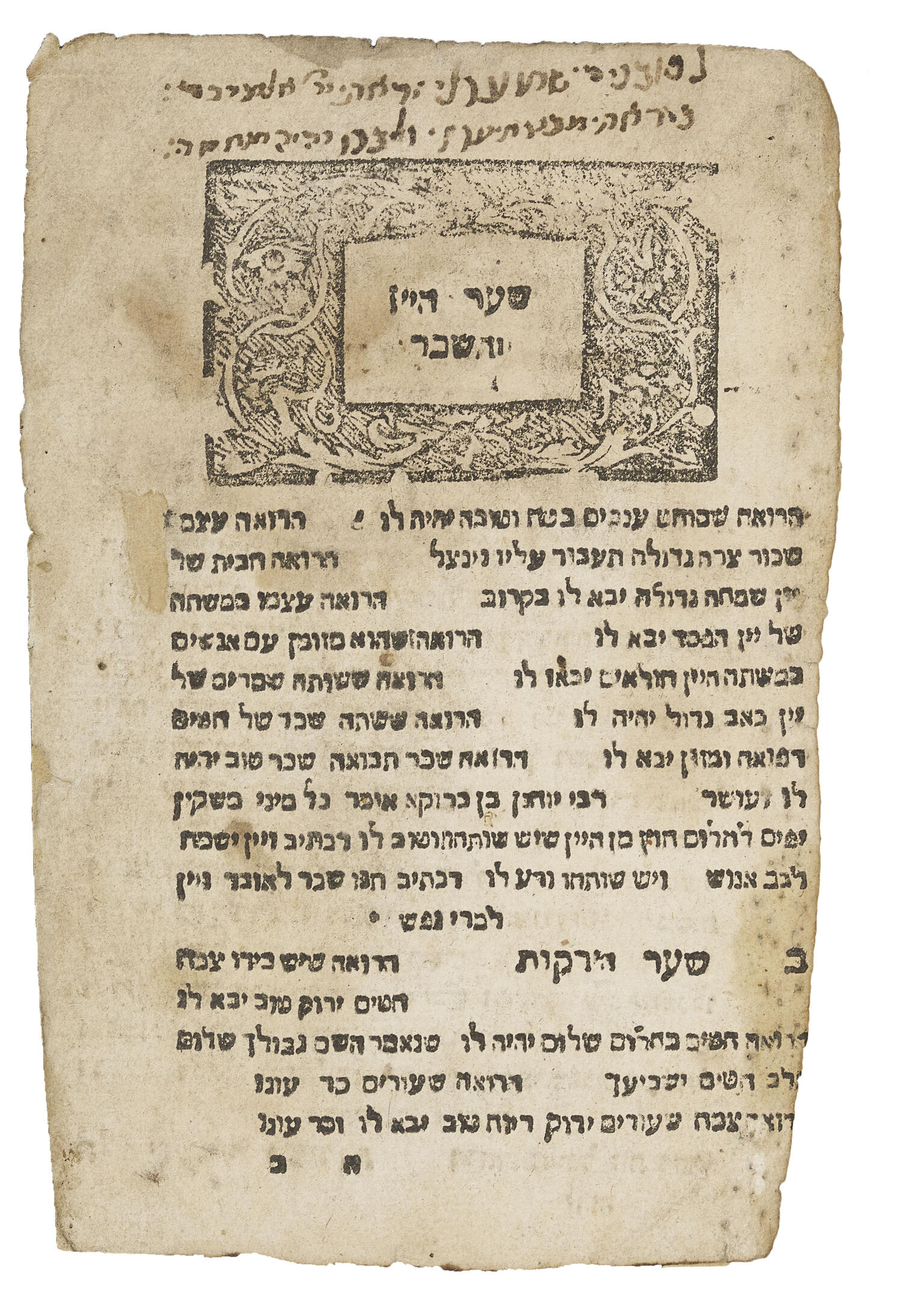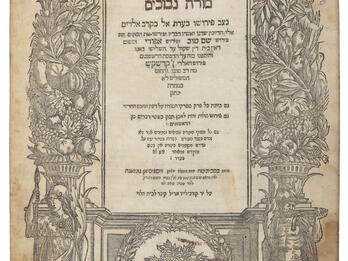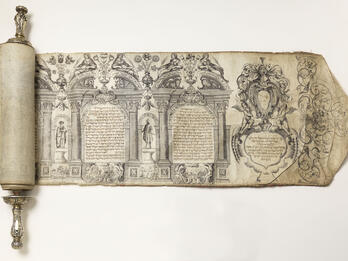“Hayya Ga’on’s” Pitron ḥalomot (Dream Interpretation)
Unknown
1557
Image

Engage with this Source
Related Guide
Jewish Printing and Book Culture
1500–1750
Jewish printing unified far-flung communities by standardizing religious texts, created textual uniformity, and enabled vernacular translations, and facilitated the spread of Jewish texts and knowledge.
Related Guide
Early Modern Jewish Languages
1500–1750
As Ashkenazi and Sephardi Jews migrated eastward, Yiddish and Ladino emerged as distinct languages. Both languages developed literary traditions, as print became more widespread.
You may also like

Moses Maimonides’ Guide of the Perplexed
This edition of Moses Maimonides’ Guide of the Perplexed was printed in Sabbioneta, Italy by Cornelio Adelkind for Tobias Foà. The twelfth-century work was an attempt to reconcile Aristotelianism with…
A Ruling on the Printing of the Zohar
The earth made noise as did the heavens, and the doorposts are shaking at the voice crying out that it would be wrong to publish hidden and sealed materials and to break through the fence established…
Colophon: Zohar (Mantua Edition)
I will greatly thank the Lord with my mouth, and I will bless God in full assembles [see Psalms 68:27], for He has not forsaken His mercy and His truth from me [see Genesis 24:27], but has led me on…
Colophon: Tikune ha-Zohar (Mantua Edition)
The peaceable and faithful in Israel (2 Samuel 20:19), the heads of the exile of Ariel, the same are the mighty men of old, the men of renown (Genesis 6:4), wise men of understanding [see Deuteronomy…

Responsum: On Printed Megilot (Scrolls of) Esther
Question: . . . When Rabbi Joseph Ottolenghi was visiting this land, he told me that he printed sixteen megillot on parchment prepared for this purpose [i.e., to be used for the scrolls—Ed.]. When I…

Esther Scroll (Amsterdam)
The book of Esther is chanted aloud from a scroll (megillah) on the holiday of Purim. This example from the Netherlands is lavishly decorated, with the Hebrew text framed by arcades between which are…


